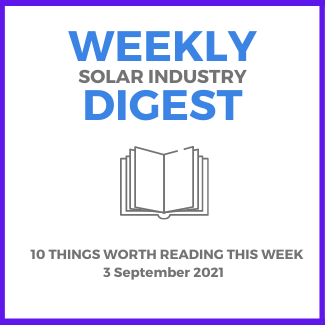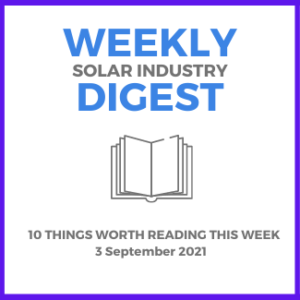Large scale solar projects in the US have proceeded steadily in the face of COVID. A study showed that 7 solar projects with construction costs greater than $250 million were not seriously slowed. Developers got the needed permits for the projects, and only 3 of them did not meet their deadline for construction/completion.
A roundup of solar CEOs recently discussed 2021 solar sales lessons: educate re rampant customer misconceptions, streamline your process and make sure customers know things can go slow, tap tech to automate, and empathize about the fact that customers have had a tough year.
Over the course of their lifetime solar panels are very reliable. Many systems perform 80-90% within 10% of predicted output with many exceeding this. Module failures are only 0.2-0.02% and most systems degrade in the 0.7% per year range. Failure can be avoided with proactive maintenance approach and installation best practices.
Good news for US panel manufacturing: Silfab Solar has opened a new automated WA state facility that will double its manufacturing capacity. The facility focuses on the Silfab Prime 370wt series module. This will boost the anemic domestic manufacturing market in the US, particuarly given supply chain constraints.
SPW lays out what installers need to know about updates to NEC 2020. They discuss the key takeaways for disconnect safety, wire management, matching connectors, Article 705, conductors/conduits/OCPDs, and module-level shutdown. For the very latest breakdown by state go to the NFPA website.
The federal Bureau of Land Management is beginning to revise its rules around renewables permitting and linear rights-of-way on public lands. They expect to release a proposed rule early next year that could significantly contribute to the nation’s renewables portfolio. BLM’s asking the public to weigh in on the proposal.
Res electric panels are a $100 billion impediment to electrification. In 48 million+ homes, panels (each with a cost of about $2,000 to upgrade) are outdated and need upgrading to be able to transition away from fossil fuels. This problem impacts lower-income customers the most, though utilities can use rebates and incentives to help initiate upgrades.
Battery storage procurement in America is like the Wild West right now because the supply chain falters at times, customers don’t always understand warranties and performance claims they get from manufacturers, the hardware can be complex, and there’s not a lot of financing options for standalone storage.
This podcast covers the relationship between backless truckers and bifacial panel yield through the OMCO Solar lens. It discusses their mono facial as well as the bifocal tracker, landscape vs. portrait trackers (a two-in-landscape tracker performs the best and is easy to install), and how OMCO trackers have evolved.


